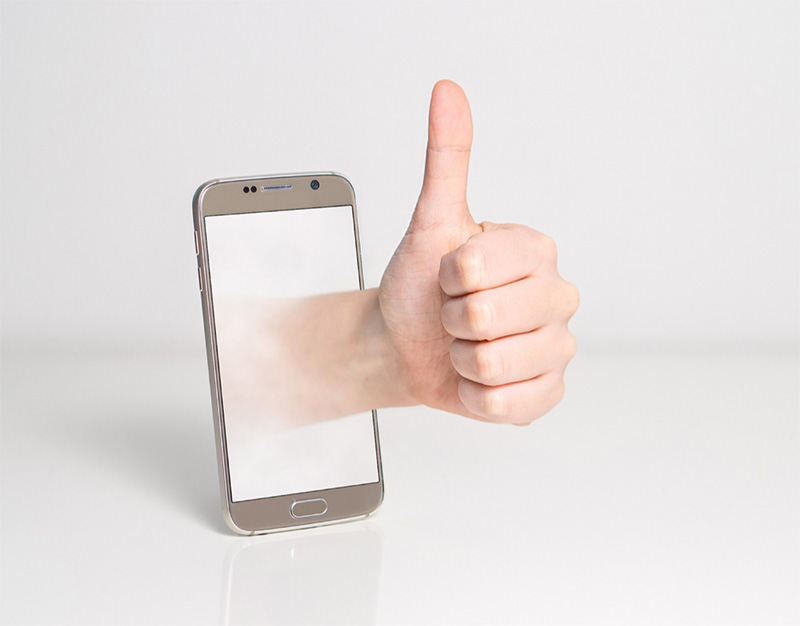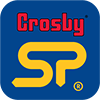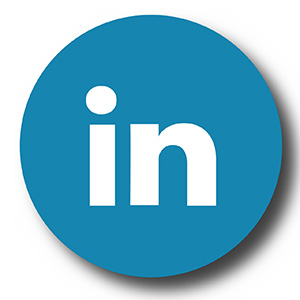Many people still don’t harness the power of social media platforms like LinkedIn, says Mr. Loadlink.
Ever woken up with a sinking feeling as the events of the previous night (some of them, at least) come flooding back? In truth, my partying days were over a long time ago and I’m grateful that my moral compass remained pointing north most of the time anyway. Further, in my heyday we didn’t have smart phones or social media tracking our every move, giving us opportunities to post our thoughts, and our friends or foes the ability to capture our shortcomings in photos or videos and upload them where the world (and our parents!) could see. Smart phones must bring a whole new dynamic to the heady years of young adulthood.
It’s certainly a changing world, one where we have to deal with trolls (a confrontational or quarrelsome internet user) and catfish (a person who pretends to be someone else online for ill-gotten gain). Our data is no longer kept safe at home or reserved for paper envelopes from the bank marked ‘private’. We’ve all read about Cambridge Analytica gaining access to information on up to 87 million Facebook users, while data leaks are commonplace where a password of no more than a few letters guards what was once kept in a safety deposit box in a safe, down a long staircase, behind a secret door.

A troll is a confrontational or quarrelsome internet user that negatively reacts to a person’s content or targets them with varying degrees of abuse
But—and it’s a big BUT—we too readily look at the negatives of social media. Come on, did you really used to board public transport and chat to the person next to you? No. We clambered onto the carriages with the same disregard for fellow passengers as we do today and then covered our faces with a broadsheet newspaper. We would tut if someone sneezed and roll our eyes when a dog owner asked for room for their twin Great Danes.
I don’t buy into the scathing criticism youngsters get for “always being on their phones”, nor do I give credence to the suggestion that the upcoming generation are unlucky that they’ll never get a chance to play outside with sticks and pushbikes.
Brand you
There is a lot more incredibly positive behaviour and interaction on social platforms than there is bad. And professionally we have opportunities to upscale our businesses and develop our careers that we’ve never had before. The biggest game-changer, and the crux of this blog, is the rise technology has given to the personal brand. People now have greater control of their image, reputation, and destiny than ever before. There are cynics, of course, who say there’s now more scope for embellishment, but not every curriculum vitae (CV) or résumé printed on paper was 100% accurate. Again I stress that we haven’t devolved; we’re not now a lying race of con artists.
Take professional networking site LinkedIn, for example. There, people can constantly update a profile and connect with whoever they want. Someone even in the early months of employment can showcase their assets, skills, interests, and ambitions, whilst making connections with peers, competitors, and prospective future employers. There’s no need to smuggle paper business cards out of the office to make a private contacts book, or secretly submit a CV to a recruitment agent. We’re now proud owners and ambassadors of our own brand; we control who is attracted to it and we can monetise our abilities more efficiently than ever before—if we get it right.
This is a culture everyone, including employers, should embrace, not fear. I’m passionate about my staff growing their personal brands, particularly on LinkedIn; so much so that I even offered them participation in a one-day course about the platform a week or so ago that I had experienced myself earlier in the year. Our digital profile pictures, bios, posts, likes, comments, and more say so much about us and can yield such results that I felt it was important to back up use of the site with as much intelligence as possible.
I won’t plagiarise specifics but I wanted to share some of the general points garnered in the hope it, first, encourages readers to get more actively involved in LinkedIn and, second, that they do so with the greatest possible impact.

We discussed the use of emojis during the course; I have no problem with adding relevant, fun graphics to my LinkedIn posts
Sell later
The biggest piece of advice I can give anyone looking to use the platform to grow their brand and / or generate revenue, is to engage, collaborate, and share long before they try to push themselves and / or their product onto a contact. The most powerful salesperson in an industry is he or she that is renowned as an expert in that sector. Thought leadership status isn’t gained overnight, however, and can never be acquired without authentically demonstrating a commitment to the positive change of a marketplace.
“Here I am. Buy this,” won’t work. Once a good reputation has been earned, then there’s no harm in presenting a solution to a problem. The recipient will recognise it as a sales pitch but will likely welcome it.
It’s a slow burner, but I’ll incentivise you: LinkedIn offers users access to 500 million people. Each user has an average of 400 connections so every connection one makes opens up ‘second’ connections to the tune of the same number. The most effective way of growing connections is to engage with a target audience. The site makes it easy to locate people by industry, while a deeper drill can identify professionals with a certain job title. Researching what they’re talking about or having sleepless nights over gives a potential contact a magic formula; they can become a problem solver. A request for connection with a polite note gets the ball rolling.

LinkedIn allows users to network with like-minded individuals across the world
The leaders of the course Straightpoint (SP) employees took charted the route from ‘known’ to ‘liked’ to ‘trusted’. One can’t leap from one to the other without taking time to post relevant content, interact with other people’s posts, and communicate as an individual. That last point is important because people, as we know, buy from people. LinkedIn is a place where professionals go to hang out with like-minded folks. It’s like the canteen in a workplace or the break room on a jobsite; one has to be friendly, likeable, and add value to the community to be accepted then welcomed back.
An expert once told me that just when a person thinks they’ve got their feet sufficiently under the table to start discussing a sale, that’s when they shouldn’t. “Give, give, give, give some more, then ask,” he said.
Face it
There are seven key elements to a LinkedIn profile: photograph, professional headline, summary, experience, recommendations, skills and endorsements, and contact information. I want to highlight two for further exploration: a person’s photograph and their summary. They were focal points of the aforementioned course content and I see glaring mistakes made in relation to both when I’m on the site—and I’m on there daily for varying periods of time so I feel equipped to judge.
In fact, I’m in the top 1% in both my industry and network social selling indexes (SSI). I tell you not to brag but to point out what can be achieved through a bona fide commitment to an industry and a dedicated, long-term strategy.
The simple criterion for a profile picture is a clear image of a person’s face, as they would look in a business situation. A sun lounger shot is a bad idea (unless one is in the sun-bed trade!) as is one of someone standing outside a tavern in a Hawaiian shirt. A clear, sensible head and shoulders photo is much more effective. It doesn’t have to be boring or neutral like a passport picture, but it must be akin to the professional as they would walk through a boardroom door or report for an interview. It’s a mistake to use a very dated or flattering image because people will be disappointed by the real-life version and, moreover, it might create doubt over an individual’s integrity.

What does your profile picture say about you
If they’ve been prepared to mislead on their photo, where else has the truth been given scope?
When writing a LinkedIn summary, stay away from jargon. Nobody really wants to meet a motivated, creative, enthusiastic, passionate, successful, driven, experienced man or woman. Assume visitors to a page or potential connections know that about a person already. Think about how you would speak to someone you met at a conference and write in the same tone. If you’re funny, crack a joke. Refer to yourself in the first person and be interesting. If you shake someone’s hand during lunch at a seminar, you’re unlikely to say, “This is Ivor Bighead and he is a motivated, talented, strategic, all-round good guy with a proven track record,” are you? “Hello, I’m Ivor, I’m hear to learn about ABC and I’m also looking forward to tonight’s networking party,” would work a great deal better. It’s the same on LinkedIn.
Like it
As with most social platforms, the fulcrum for most activity on LinkedIn is the ‘Like’ button. The easiest way to acknowledge a person’s post is to click it so they get a notification. The platform’s algorithms also detect the engagement and filter content accordingly. A dozen likes doesn’t mean 12 people have read something, however. The research that was alluded to in our session stated that users typically get one like for every approx. 140 post views. If a post gets 11 or more likes in the first hour, it will be categorised as ‘popular’ by the algorithms and be made visible to a lot more people, dramatically increasing the chances of it going viral. It’s another reason why it’s important to be relevant, interesting, and non-commercial. Can you see a post like, “Buy my amazing shackles,” going viral as people rush to interact and snap up the stock? No, thought not.

Post content your target audience will like
LinkedIn is just one social media platform. SP is active on many others, including Twitter, Facebook, Instagram, and YouTube. There isn’t time to detail our strategies for each in this blog but it’s important to note that tailored content for each vehicle is crucial. There are apps that allow users to post to multiple platforms at the same time but I don’t believe engagement levels are as high as when a Twitter post is targeted for a “look at that news” hungry audience or an Instagram post is photogenic and more laden with hashtags.
Search #loadcell for SP content.
Good social media posts include a call to action, as do most blogs. So call me! I’d be happy to discuss further the matters raised in this article and welcome all feedback.
Mr. Loadlink
dayling@straightpoint.com

